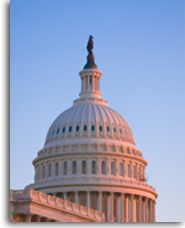At Politico, Peter Schaefer interviews Greg Haas, organizing director of the Wyoming Democratic Party about the obstacles to organizing for Democratic candidates and policies in a deeply-red state. Some of Haas’s insights:
“Something I’ve experienced traveling around the state is that there is a palpable fear of even letting your friends know you are a Democrat, or even in line with what Democratic politicians are doing. There’s vandalism that takes place here, and people are scared of that.”
“In rural places, a candidate goes out on the campaign trail and they say that the first thing they have to do is distance themselves from the national party. Now, I don’t think they have to do that, but they feel like they have to do that. They say, “I’m not a Democrat like national Democrats.” So much news is nationalized, and there is so much news that is sensationalized. I think if you want to talk to people about local issues, that’s what you should focus on….Local Wyoming officials are not going to solve the border crisis in Texas. People’s emotions run high on those hot-button issues, but when it comes right down to it, this local community does not come together on party lines. It comes together on what’s best for the community.”
On job security: “There are more and more people who are really afraid of what’s going to happen to their family ranch, or am I going to lose my job? And when people are that scared, I think as humans we have a tendency to find somebody to blame.… You know, “This person that doesn’t look like me or the people I grew up with is either going to take my job, or my kids’ job, or they’re just going to mooch off or get everything for free.”
On key issues: “The important things for Democrats are fully funded public education, people being treated equally and freedom being afforded to all people. It’s also pretty important to a lot of people in Wyoming, Democrats or otherwise, that women have the right to control their own bodies and their health care and that agency isn’t taken away from them. Climate matters to a lot of people, not in terms of climate change necessarily, but clean air and clean water.”
On President Biden and other national Democrats showing up and claiming credit in rural states: “I absolutely think them showing up to explain and celebrate those programs could have immeasurable benefit. Them showing up would impact the narrative in the news, and it would help those who feel like they’ve been forgotten feel like they’re not. The people responsible for these good works are being too humble to talk about them….There’s a sign over there that says “Project funded by President Joe Biden’s Bipartisan Infrastructure Law,” and there’s a Wyoming Department of Transportation logo and U.S Department of Transportation logo….That’s the only sign I’ve seen for any project in the state that says exactly where the money is coming from.”
“People are so interested in the hot-button things. Right now, one of the parties is spending most of the time talking about the “invasion” at the southern border. There’s a lot of energy spent talking about that. That’s the go-to talking point. That distracts people from the good things going on — the successful economy, good things that are happening in Wyoming and across the country. From what I can see, the Republican strategy seems to be, “If we can just get people afraid, they’ll vote for us.”
To put Haas’s comments in perspective, keep in mind that “Wyoming is the most Republican state in the U.S. Wyoming has a Cook Partisan Voting Index of +25. Wyoming’s strong Conservative lean is attributed to its large rural, white, and Evangelical populations. Wyoming has voted Republican in every Presidential election since 1952, except for the 1964 election.” Even Liz Cheney was deemed not right-wing enough for Wyoming. It is also the smallest state in the U.S. in terms of population (less than 600,000), but has as many senators as the largest, California (nearly 40 million).
In his introduction to the interview Schaefer notes, “the national Democratic Party has invested millions of dollars in a “Red State Fund” to build out organizing in Republican strongholds. The Biden administration has also made huge investments in rural America through rural cooperatives and the bipartisan infrastructure law, which the president and his cabinet secretaries highlighted last fall on a two-week tour.” It will be a long, tough haul for Democrats to get some momentum in states like Wyoming, which gave Trump his largest popular vote margin in both 2016 and 2020. But it’s good to know that some long-haul Democrats, at least, are working hard on it.



